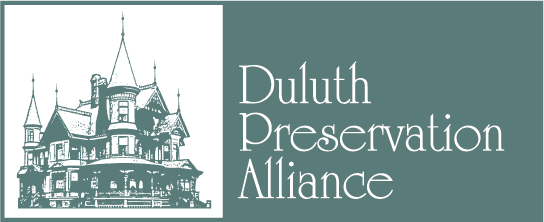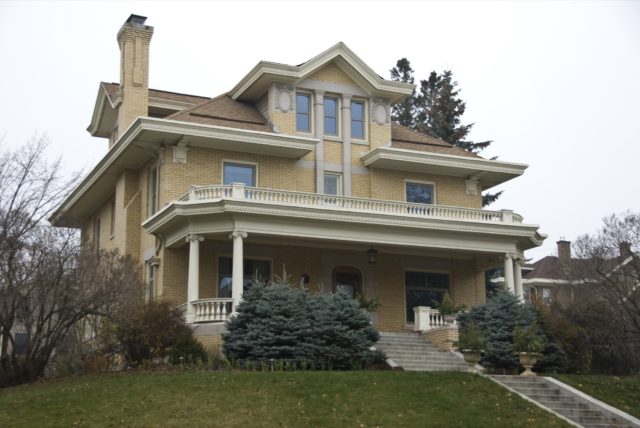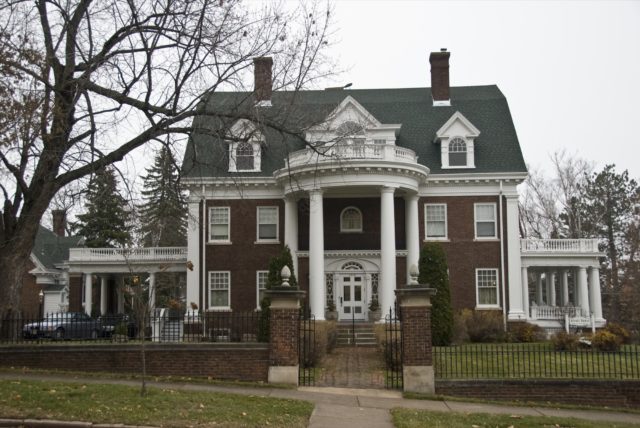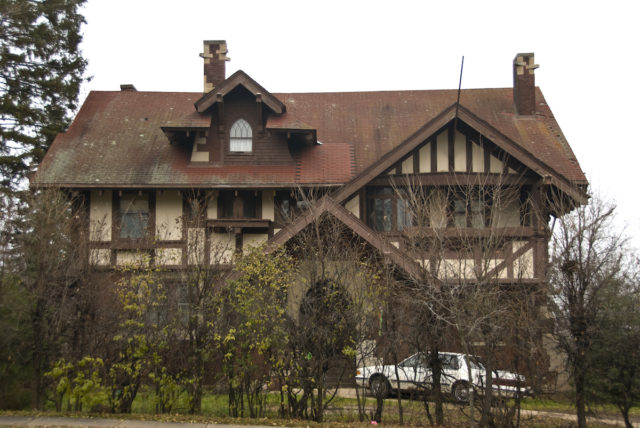Although designed by Bray and Nystrom, the McDougall home is heavily influenced by I. Vernon Hill’s Ornamented Cube idea employed on the Crosby house: a yellow brick box with a flared dormer gable. Captain Alexander McDougall, who built the house as a widower, invented the whaleback steamer (nicknamed “pig boat” […]
Read MoreArchitect: William T. Bray
2316 E. 1st St.
William Bray designed what is perhaps Duluth’s most impressive example of Georgian architecture for William Olcott when Olcott was president of the Duluth, Missabe & Northern Railroad. Olcott would later become president of the Oliver Mining Company. The Olcott’s founded the Fanny Bailey Olcott Girl Scout camp on Half Moon […]
Read More5 N. 23rd Ave. E.
A three-story high octagonal tower with battlements and parapet walls give this English Revival style house with Tudor details a castle-like appearance. The stone façade is made of limestone quarried on Lake Erie’s Kelley Island. Cutler was president of, naturally, the Dwight G. Cutler Company, a salt, lime, cement, and […]
Read More2210 E. Superior St.
A striking example of the Tudor Revival style, this many gabled, half-timbered house features decorative wood carvings, limestone trim, and a Gothic arch surrounding a recessed Tudor-arched entry door. It is one of Duluth’s many homes designed by William T. Bray, who apprenticed under preeminent nineteenth-century architect Oliver Traphagen. Frank […]
Read More2311 E 3rd St
This gorgeous prairie style home with craftsman details was originally built for one of Duluth’s pioneer families, Henry and Mary Salyards. The Salyards built this home with the assistance of architects Bray and Nystrom. Mr. Salyards was the President of the Duluth Board of Trade, a director of First National […]
Read More




